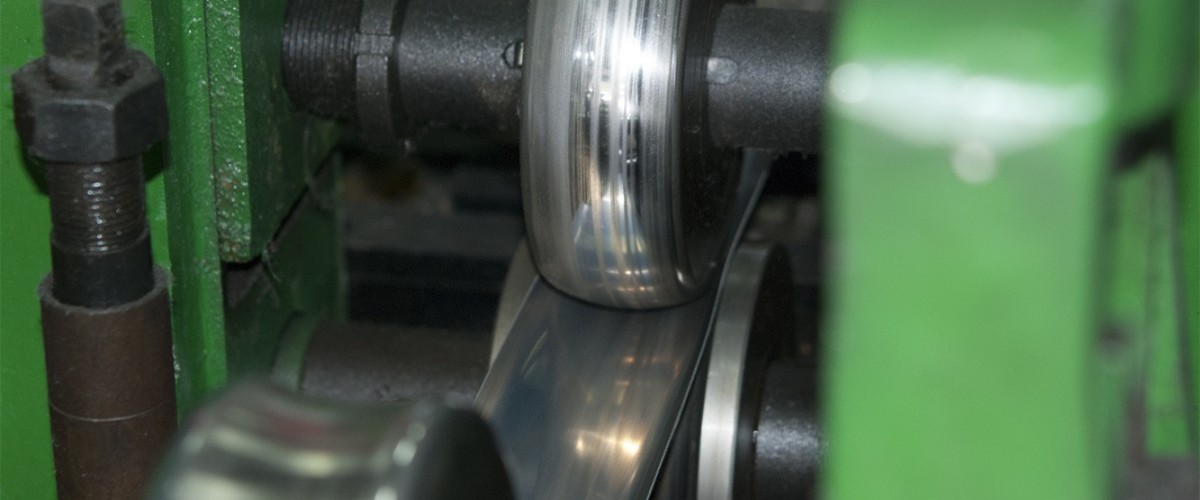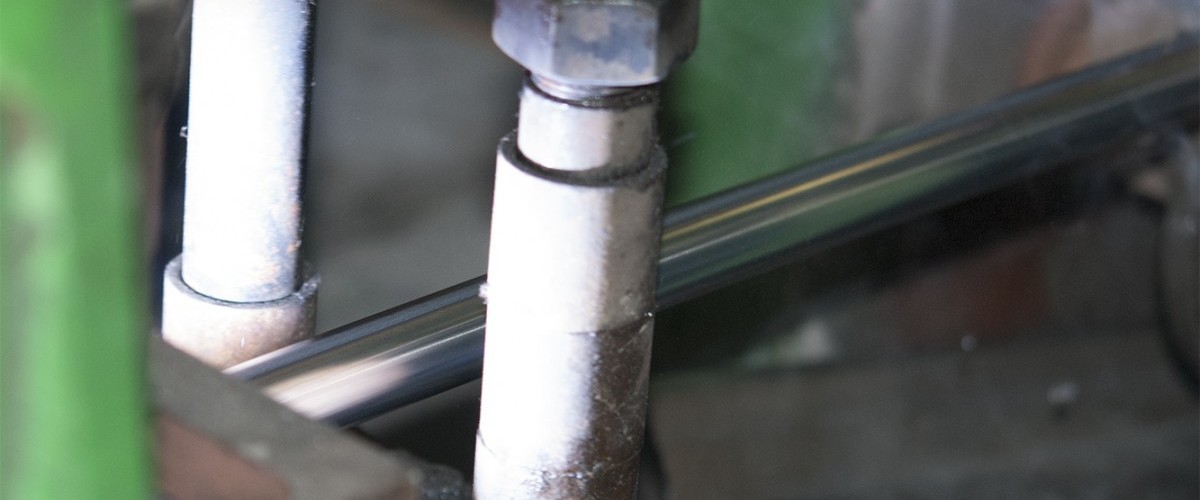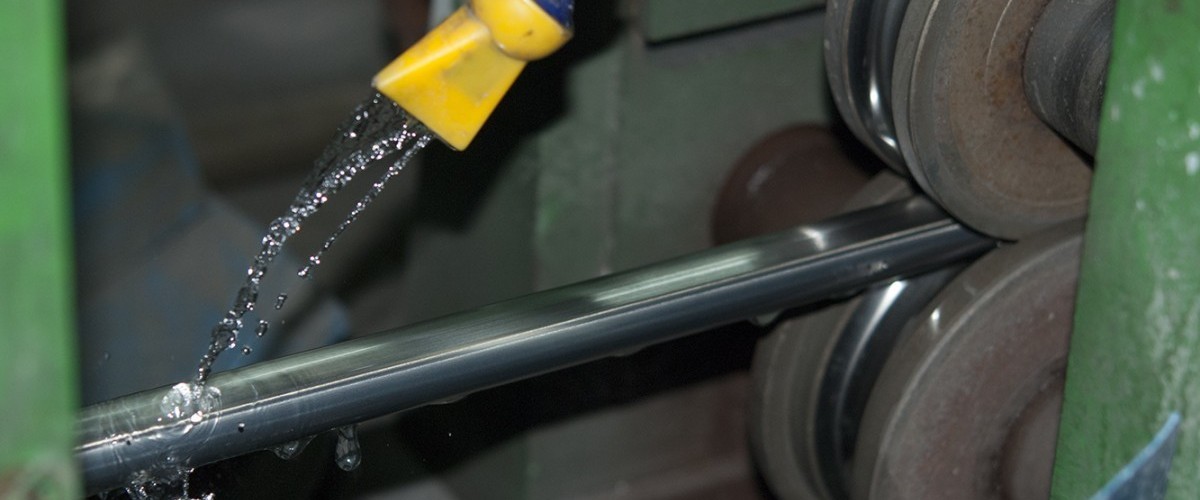STAINLESS STEEL PIPES

|
Trakulthai Products Co., Ltd. is a manufacturer of stainless steel products in Thailand. Using state-of-the-art machinery and technology as well as knowledge, skills, expertise and experience. It is important to pay attention to every step of production. Must be controlled. And check the quality as well, have passed the test. Strength to pressure and impact to achieve quality products and standards. The company will focus on the production and service is important. Management of production. And effective management. To meet the needs of customers. Meaning of stainless steel "Stainless steel" is the official name for chrome-alloyed steels with good corrosion resistance. But back is not popular. So there are words to replace. "Stainless steel" is the word "stainless steel" or , which is the English word "stainless steel". The word "stainless steel"It has long been used and popular among locals. General Engineers And among the lower level traders, the word "stainless steel" is the correct reading. It is commonly used in the mid-level trade circles and in academia. The word "stainless" means less stain or stain. The stain or rust stain villagers are often called rust. So may mean less rust. The word "steel" means steel. This word is well known. So when two words come together, it is called. "Stainless steel" Stainless steel is a mixture of chromium, carbon and nickel because stainless steel is the main component. Causes chromium oxide film formation. Thin skin To prevent stainless steel from reacting with oxygen. The stainless steel has good corrosion resistance. It is not worn or worn easily. Rust caused Chromium Oxide Film Destruction Coating The chromium oxide film is formed again. If stainless steel is scratched. And the tracks are moist. This can cause reactions with iron before the chromium oxide film is formed. It will cause rust. People are generally misunderstanding that genuine stainless steel requires no magnetic vacuum. Actually, the magnetic absorption or not depends on the type of stainless. They are divided into five basic groups: anthocyanins, ferritin, duplex, martensitic and hardeners by crystallization.
Type of stainless Austenitic or 300 grade stainless steel is the most widely used grade up to 70% such as 304, 304L, 316, 316L, 310 etc. Non-magnetic non-magnetic features a maximum of 0.15% chromium 16% carbon, 8% nickel, to improve fabrication and corrosion resistance. The most widely known and popular grade called 18/8 is a mixture of 18% chromium and 8% nickel. Ferritic, magnetic or stainless steel series 400 with low carbon content mix. Chromium is a major element that may be between 10.5% -27% and Nickel is a mixture of very little or no such as 430, 409 etc. Martensitic group Martensitic, magnetic or stainless steel. The 400 series contains 12-14% chromium and has a medium carbon content. Molybdenum is a mixture of about 0.2-1% nickel, such as 410, 420, 431, etc This stainless steel can be adjusted for hardness by heating and cooling rapidly. Quenching and Tempering can reduce hardness. Similar to carbon steel And find important applications in the manufacture of cutters, aircraft industry and general engineering. Hardness increase by crystallization (Precipitation hardening). The class known as 17-4H, which contains 17% chromium and 4% nickel, can be strengthened by the hardening mechanism of crystallization. Precipitation hardening mechanism. Proof stress ranges from 1,000 to 1,500 MPa depending on the type and process of heat treatment. Duplex has a mixed structure. Ferritic structure And austenitic Chromium is a mixture between 19-28% and Molybdenum higher than 5% and less nickel than the Austenite family. It was found to be very active, especially in the environment of chloride. The benefits of using stainless steel - Used in corrosive environments. (Corrosive Environment) - Cold working Prevent breakage. - High temperature (High temperature) Prevents the formation of oxides. (scale) And still strong. - High strength compared to mass. (High strength vs. mass) - Hygienic work(Hygienic condition) High cleanliness - Architectural work (Aesthetic appearance) No rust, no paint. - Not contaminated (No contamiation) Prevents reaction with catalysts. - Wet abrasion resistance (Wet abrasion resistance)
Surface of stainless steel No.1- White, silver without shadow by hot rolling or cold rolling. The thickness and size are required. Then bring to anneal. Or improved with heat. The stain does not erode. Suitable for use in extruded environments, generally used in heat-resistant applications. Do not want beauty 2D-white silver 2D surface finish after cold rolling by reducing the thickness. Through annealing and skin etching, the skin is smooth and smooth. General or pump applications. 2B- Shadow surface than No.2B is a 2D surface through a large rolled ball, smoothing, smoothing. Add a moderate shine Produced by cold rolling method. Followed by baking, removing the stain. And to lightly rolled. Passed to the polishing roller. This is a common method of cold rolling. The skin is mostly in the 2B level. This type of skin is most popular. It is the first polishing suitable for general use. BA- Through the cold rolling process, the thickness decreases gradually. Hydrogen peroxide To prevent the oxidation of oxygen in the air, glossy shiny surface. The surface of stainless steel products is made in this way. It is marked with BA or No.2BA, A, which is an annealed surface. It looks like a mirror. Which starts with cold rolling. Annealing in Atmosphere Stove The shine is a scrub with a scrub roller. Or grind the surface according to the desired grade. The shade is mostly used for architecture. The need for skin. The milk color does not reflect light like No.8 is used for the edge. Architectural elements, kitchen utensils, food process equipment No.3. The 2B surface is sanded with 100% sandpaper. The roughness depends on the sand particle size. And time to use. NO. 3 sandpaper is a surface that responds to the general use such as restaurants, kitchen equipment, milking equipment.No.4 สภาพผิว 2B ที่ผ่านการจัดถูด้วยกระดาษทรายเบอร์ 120-220 The roughness depends on the pressure, the size of the sand particles. The surface of the sandpaper NO.4 surface is a surface that responds to the general use such as restaurants, kitchen equipment, milking equipment. HL 2B surface treated with sandpaper No. 120 - 220 by roughness. Depends on the size of sand particles. And the use of sandpaper surface NO. 4 is a hairline is a skin that responds to the general use such as restaurants. Kitchen equipment, dairy equipment. No.8- Mirror Surface 2B, BA polished with very fine abrasive cloth such as # 1000, woolen cloth with aluminum polishing powder and chromium oxide. Shadow The mirror is mostly made of stainless steel. Scrub with fine polishing machine. Applied to architectural and decorative work.
Corrosion Stainless steel is resistant and corrosion resistant material. However, there are many types of stainless steel that can resist the corrosion perfectly. On different usage issues. To be used in production or assembly. In the industry. carefully.
General corrosion (General corrosion) The corrosion occurs throughout the surface (Uniform attack). This type of corrosion is less dangerous because it can measure. And predict the corrosion that will occur in advance. This corrosion will occur with stainless steel in the environment where the corrosive effect is very low.
Corrosion due to electric potential. (Galvanic corrosion) The corrosion of two metals with different electrical potential is adjacent. Dip in the same corrosive solution. Stainless steel will be a higher potential metal. Therefore, the galvanic corrosion rate is rarely increased in stainless steel. Corrosion erosion due to the flow of highly corrosive solution (Erosion corrosion) / abrasion due to abrasion (Abrasion corrosion) Corrosive Erosion / abrasion It is a common reaction between mechanical wear and corrosion from solvents, powders or debris from abrasion. Will be suspended in solution. High flow velocities will cause high corrosion rates. Stainless steel has corrosion resistance. Or a high abrasion due to a fixed film that is fastened. And to replace the surface. Corrosion on the grain edge (Intergranular corrosion) C. Gradient has lower chromium content. Low corrosion resistance along the grain. Modified by the use of "L" grades or grades that help stabilize the structure and must be careful not to corrode the grain edges during structural bonding. ∞ - 850∞ Corrosion on the grain edge. up Due to the crystallization of chromium carbide at the grain edge. At high temperatures around 450
Corrosion (Pitting corrosion) Spot or rusty corrosion is a very dangerous corrosion. This causes corrosion on the surface of a small hole. Or a hole through the material. However, it can measure material loss less. Corrosive environment Most of the chlorine ion solution is the location where permanent film is most easily destroyed in this environment. Material should be carefully selected. Especially in acidic solution of high temperature. If the conditions are corrosive, rust can not be corrected. Solve the problem by using higher corrosion resistant alloys such as stainless steel, duplex, and other grades that solve the problem.
Corrosion in confined areas. (Crevice corrosion) This bite occurs at the closed surface. Or the pressure of stainless steel. As a result, oxygen can not be oxidized to oxide film. Make the protective film more likely to break or be destroyed in this confined space. Therefore, in conditions of use must avoid the space. Corrosion in microorganisms (Microbiologically Induced Corrosion : MIC) Corrosion caused by microorganisms Caused by the bacteria that are present in the environment sticking to the surface of stainless steel. Make it Oxygen block So the corrosion conditions are similar to the Crevice Bacteria, so the situation. Corrosion worsens
Cracking due to corrosion under force. (Stress Corrosion Cracking : SCC) SCC is a brittle break that begins with corrosion in tough materials. Stainless steel grades tend to produce higher SCC grades than those of ferritic grades. Stainless steel grades are more resistant to corrosion than SCC grades. click Forensics
Tips on using stainless steel Thermal conductivity (Thermal conductivity) All types of stainless steel have lower thermal conductivity than carbon steel. Stainless steel grades with plain chromium steel have a +/1 / 3 heat transfer coefficient and austenitic grade has a +/1/4 heat conduction of carbon steel. It affects the use at high temperatures. For example, it affects the amount of heat entering the welding process, requiring longer heating. To work up a hot.
Expansion coefficient (Expansion coefficient) Stainless steel grades with chromium-only alloys have an expansion coefficient similar to that of carbon steel. The stainless steel has a 1½-fold increase in carbon steel. The high stainless steels, however, have low thermal conductivity and preventive measures to avoid the effects. The subsequent damage. Low heat dissipation, heat dissipation using copper rods, retaining, anti-twisting. These factors need to consider the sharing of materials. For example, heat exchanger between carbon steel shell And anodic neutrals.
Film Protection and Film Creation (Passive film) Stainless steel will have a thin film. Corrosion resistance Need to maintain the integrity of the protective film. - Avoid damage or severe mechanical exposure. - Repair areas that are affected by corruption. Areas of scabs or stains. Due to the high temperatures near the welding line, mechanical damage or grinding, contamination by the protective film (passivation) Use only acid-based soaking to remove stains from pickling or acid baths, or use an oxide film. (passivation) on the surface of stainless steel. - Ensure that there is sufficient and uniform oxygen to produce the stainless steel oxide. - Surface damage due to severe metal-to-metal abrasion. (Galling /pick up / seizing) Surface of stainless steel Tend to be corrupt Because of severe friction. Must be careful and careful. The damage that occurs is that for the surface to be rubbed all the time should use the lowest load or friction. Make sure the friction does not cause heat. Avoid touching the surface with powder, sand, sand, etc., and use oil or coating. |











